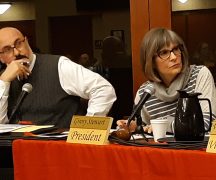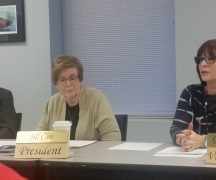By JAN LARSON McLAUGHLIN
BG Independent News
The Bowling Green Board of Education voted Tuesday evening to put a combination income and property tax to build a new consolidated community elementary school on the November ballot.
Minutes later, the board members were confronted by citizen Richard Chamberlain, who reminded them of the fate of the last two building issues on the ballot. The first failed by a “resounding” 500 votes, and the second by more than 1,000 votes.
“Would you resign as a failed board if this fails,” Chamberlain asked the board. “You’re costing us a lot of money dragging this out.”
After the meeting, board vice president Bill Clifford said the district isn’t trying the same issue for a third time. It is working with a community task force recommendation that it just focuses on housing elementary students, it splits the funding between property and income taxes, and it covers a shorter period of time.
The issue includes 0.25 percent income tax, and 1.6 percent property tax – generating $20 million each for 30 years. The property tax would cost the owner of a $100,000 home about $56 a year.
“I don’t see it as a board versus community issue,” Clifford said. “We have listened to the public. We think we put the best issue on the ballot.”
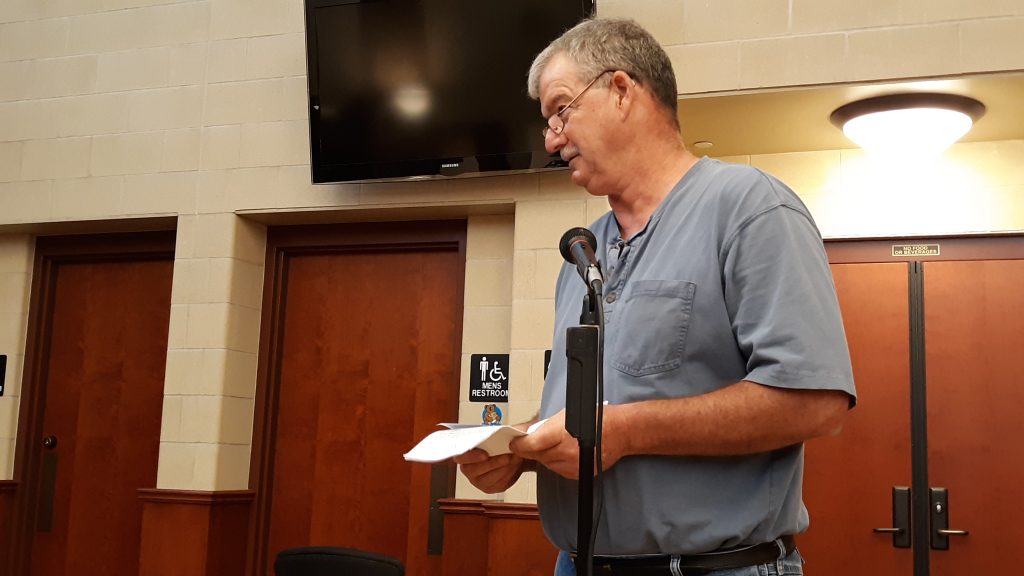
But Chamberlain heard something different from the task forces. He said the facilities task force recommended three separate elementary schools.
“The board made a bold move,” he said. “It was not what the task force recommended.”
However, Ken Rieman, who served on both the facilities and the finance task forces, disagreed.
“I believe the board did follow the recommendation of both of these task forces,” Rieman said.
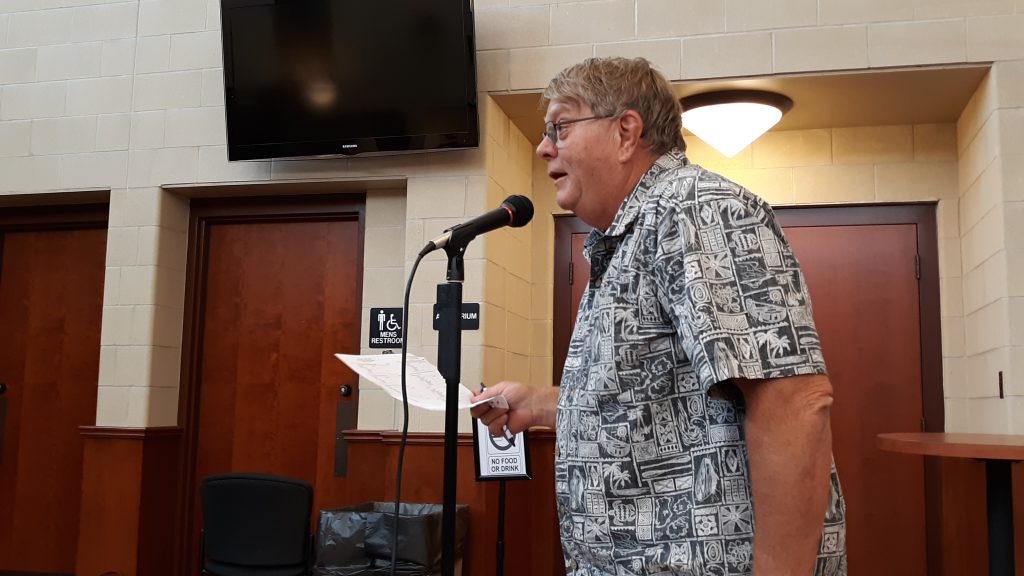
Chamberlain also said the board is pulling a fast one on the citizens by just addressing the elementary issue now and putting the high school off till later.
“This will end up costing more than what was proposed before,” he said, referring to the failed $72 million bond issue. “This will be more money over a longer period of time.”
Chamberlain said his facts were indisputable. “The votes were counted. This isn’t in dispute,” he said.
But the finance task force did talk about delaying the high school building issues during at least one of its meetings. It was agreed that since the district did not seem to have the will to pay for all the buildings to be renovated or replaced at once, it would have to be piecemealed out.
The finance task force agreed that was the best course. During its final meeting, by a vote of 29 to 5, the task force voted to ask the Bowling Green Board of Education to put an issue on the ballot to raise an estimated $40 million for the district’s elementary.
At that particular meeting, financial consultant David Conley informed the task force of something many of them already knew. By time the district spends about $40 million on its elementaries, and then deals with its aging high school later, it will have spent more than the original $72 million bond issue that voters turned down.
“In essence, we’re looking at the same $72 million,” task force member Richard Chamberlain said at that meeting.
No, Conley said.
“It’s going to be $100 million when it’s all done. It’s inevitable. Everything goes up in price,” Conley said.
The conclusion of the facilities task force was less clear, and appears to be haunting the effort to pass the building issue.
During frequent meetings, the majority of the facilities task force members consistently supported a consolidated elementary – both for educational and operational reasons.
But when asked not what they thought was the best for students, but what the community would support at the polls, the top choice of the facilities task force was the building of new Conneaut and Kenwood elementaries, plus renovation and expansion of Crim Elementary, with an estimated cost of $37 million.
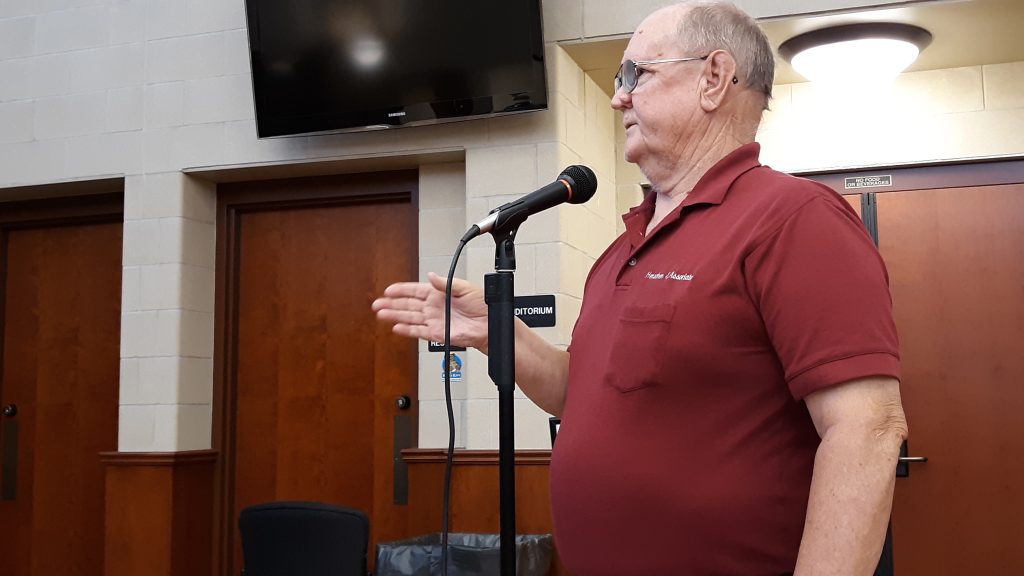
Also at Tuesday’s meeting, citizen Bud Henschen asked if the district had done something to resolve heating and cooling issues at Conneaut and Kenwood elementaries.
“Hopefully we haven’t been thinking only of the levy,” Henschen said.
Clifford said the district’s maintenance policy will ensure that the cooling and heating are “up and running at its best” when school starts.
In other business at Tuesday’s meeting, Superintendent Francis Scruci reported the school district had to replace 27 teachers this summer. Two teachers left because of the district’s salaries, two left the profession all together, and the rest were moving closer to home to start families or because they were following spouses.
“That’s so much better than last year,” when 20 teachers left before the district improved its salary schedule, Scruci said.
The board also voted Tuesday to pick up the employees’ share of retirement benefits for administrators.
Some years back, when making cuts, the district decided to cut that expense. However, the board has now found that the lack of that benefit has made it difficult to get administrative applicants.
The retirement issue seems to be a primary factor in many of the applicants losing interest, Superintendent Francis Scruci said.
A few administrators have been grandfathered in, but three-quarters (15) of the district’s administrators have to pay their own portion of retirement.
Scruci had asked the board to consider reversing that decision.
“It will put us on an even playing field,” to get quality administrative candidates, he said at the last meeting. “That’s a definite deal breaker for a lot of people, and a non-starter for some.”
“As a district, we want to be competitive,” Clifford said on Tuesday.
School district treasurer Cathy Schuller said the change would result in an estimated $35,000 savings for the district due to retirements, resignations, attrition and replacements.

Citizen Grant Chamberlain asked the board for more financial information each month, so the public knows how its money is being spent.
“We fly by the treasurer’s report every month,” he said.
“We’ll take it under advisement,” Clifford replied.
Also at the meeting, Scruci reported that the Lubrizol company in Bowling Green gave the district $18,396 for a STEM virtual reality lab.


